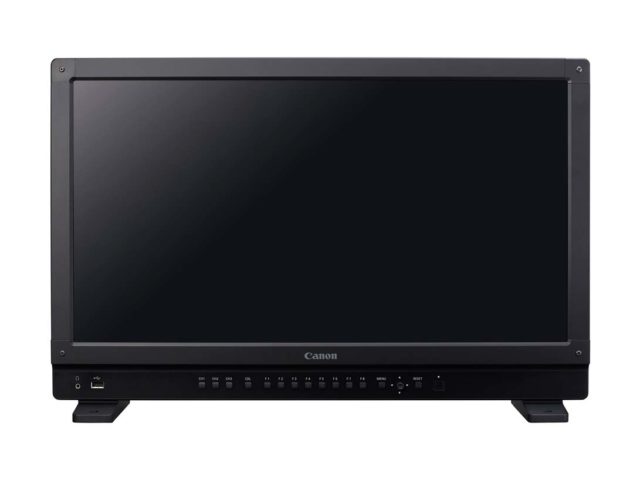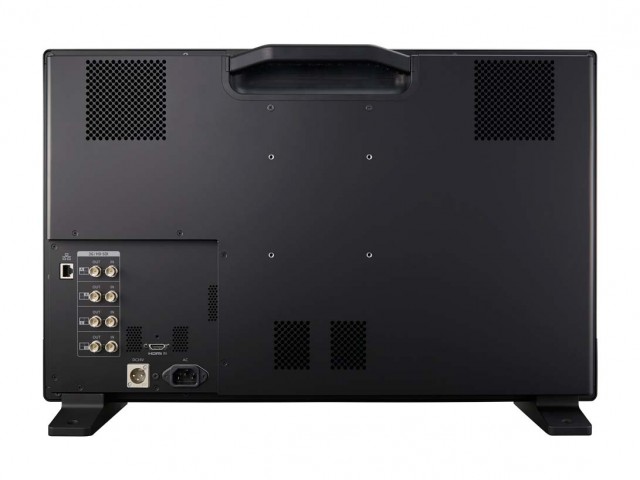At NAB, Canon showed a prototype HDR 4K monitor. That led to some questions for Mr. Shinichi Yamato, head of the Display Product Business Unit of Canon Inc, Japan (above), and Mr. Hitoshi Doi, Future Product & Solution Group at Canon U.S.A.
JON FAUER: When do you think the prototype HDR monitor we saw at NAB will be ready?
CANON: Because HDR is rapidly becoming a global trend, we at Canon have already begun to commercialize HDR-enabled products such as the current DP-V3010 and recently announced DP-V2410 4K Reference Displays that comply with SMPTE ST 2084, the first worldwide standard for HDR displays.
We took the opportunity of the NAB Show to let our customers know that we are working on advanced HDR display technologies of the type we exhibited in prototype form at our booth.
Canon clearly recognizes the importance of HDR. In addition, we have already begun to support advanced display technologies such as BT.2020 and ACES 1.0, striving to lead the industry in providing the benefit of next generation technologies.
As for HDR, the technology is still evolving and there is also an extreme proposal such as Dolby Vision to give you an example. We would like to keep focusing on the trend in the market and their requirement to evolve our technology and product lines accordingly.
On the Canon DP-V2410 4K Reference Display Monitor: please explain the HDR modes. How do they work? Is there an industry standard yet?
The DP-V2410 is a strategic product that we developed to enhance coordination with our Cinema EOS System. The DP-V2410 supports the SMPTE ST 2084 standard with a built-in de-bayering function that enables the screening of 4K RAW footage shot on Cinema EOS System C500/C300 Mark II cameras with a single 3G-SDI cable, doing away with the need for additional external equipment.
By supporting camera data (log data) that retains the original coloring and brightness of the scene and also by supporting SMPTE ST 2084, the DP-V2410 enables HDR images to be monitored. The HDR mode supports the capture of wide dynamic range imagery. For example, in sunset scenes containing both bright and dark areas, or cityscapes that combine dark street areas with bright sun and clouds, the portions of the image that were hardly recognizable before because of either loss of shadow detail or overexposure, can now be displayed with all the corresponding detail plainly visible.
Why LED instead of OLED for this monitor?
When it comes to achieving the high brightness requirements of HDR, LED is considered to be the best technology available. In particular, we feel that the long-term reliability and high brightness of LED displays are superior to OLED. To satisfy exacting professional needs in image quality (gradation of black levels, faithful color reproduction, high-accuracy uniformity) and reliability, this display incorporates the best LED panel currently available.
How do we access ACES color space?
The DP-V2410 incorporates a Canon-designed RGB LED backlight system and IPS LCD panel together with a proprietary image-processing engine for display that reproduces a rich array of colors. These combined technologies support the ACES proxy (ACES 1.0) transfer standard for ACES color management advocated by AMPAS. (The ACES color gamut is fully mapped within the Native color gamut of the DP-V2410.)
There are two ways to use ACES with the DP-V2410:
1. ACES Proxy signal output directly by Cinema EOS cameras.
DP-V2410 sets ACES Proxy in picture mode. (It supports ACES 1.0)
2. Cinema RAW signal output by Cinema EOS cameras such as the C500 and C300 Mark II.
DP-V2410 sets ACES Proxy in picture mode and changes IDT depending on the model and the color gamut of the camera.
What is Canon’s recommendation when using multiple DP-V2410 monitors on set (DP, director, DIT) and near set (dailies) and in post production for grading?
DP-V2410 delivers superb performance as a reference display. Therefore, we anticipate that it will be used for the entire creative process, from image capture on set through dailies to grading during post production. During production, we recommend an On Set/Near Set configuration if possible. The reasons are as follows:
1. The DP-V2410 achieves an excellent balance between operability and portability at actual shooting locations.
2. The DP-V2410 displays camera information (Cinema RAW link-up).
3. The DP-V2410 can be used to check the Dynamic range of the camera when shooting for HDR.
Curtis Clark, ASC was consultant on Gale Tattersall’s promotional short “Trick Shot” for the new Cinema EOS C300 Mark II. Carolyn Giardina wrote in The Hollywood Reporter (April 17, 2015), “Clark noted that an ‘extraordinarily important’ on-set tool was Canon’s 24-inch 400 nits reference display. ‘It was able to get a Raw image from the camera and monitor in a Rec2020 color space,’ he said. ‘It’s more than a convenience, it’s a confidence builder.’”
Canon has a strong product line of high-quality cameras and lenses for image acquisition. We are now able to complete our system by adding high-quality HDR reference displays. With these products, we can now legitimately propose a change in video production workflow to support HDR throughout the entire creative process from image capture through editing. We believe that there is strength in this point.
The overall concept of Canon’s display technology is to be considered as an accurate reference to the scene captured by the camera and lens. We aim to faithfully reproduce the images captured with high-quality cameras.











